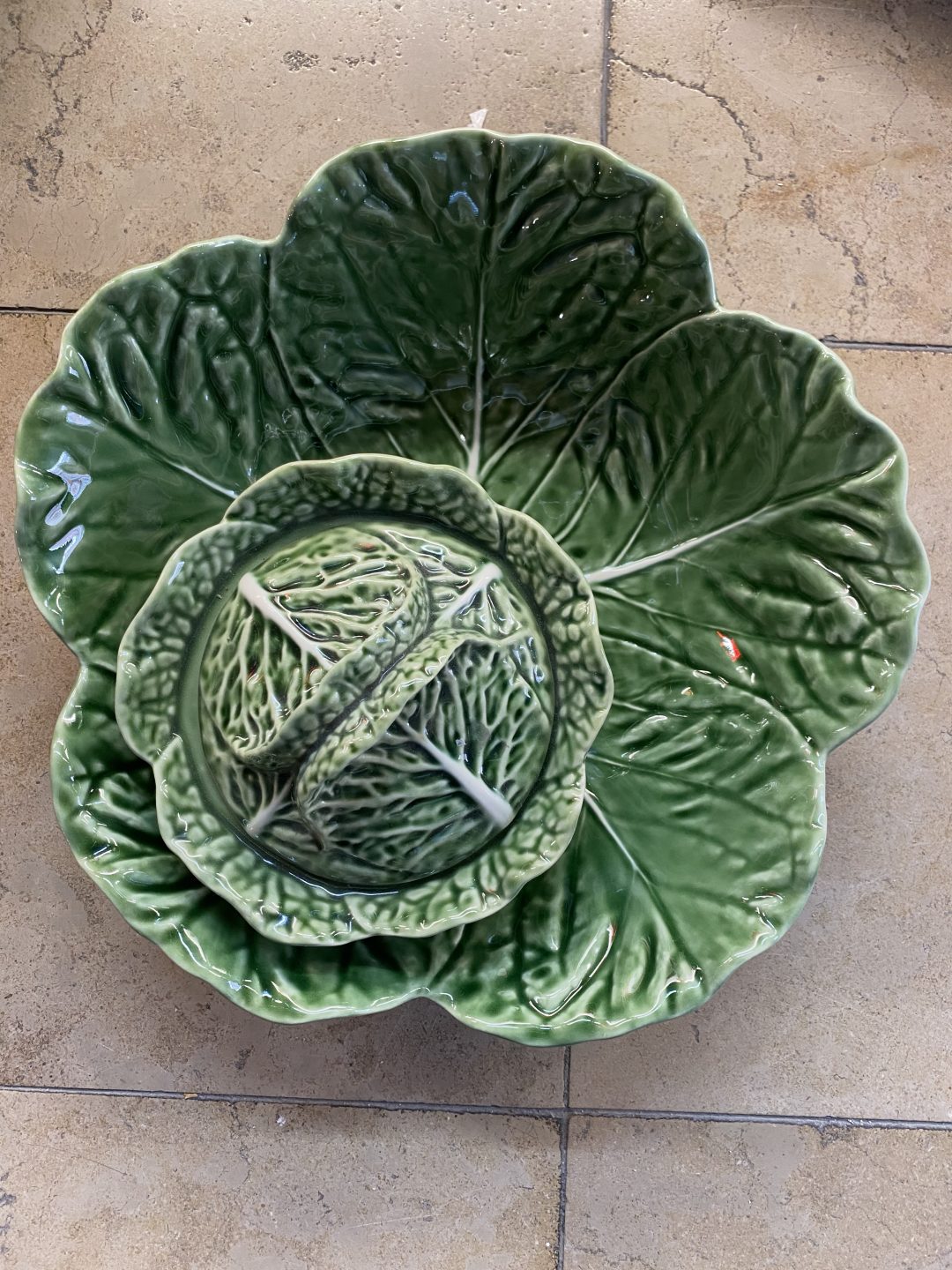Cabbage Tureen

Photo: Sónia Marques
When I was a small child, the only men I considered attractive were those with perfectly combed, straight hair. Being attractive, as far as I was concerned, was exactly the same thing as having a neatly organized hairstyle. So it should come as no surprise to learn that what I considered the epitome of bad taste was the bizarre “cabbage tureen” manufactured since 1860 by Portugal’s Bordallo Pinheiro ceramics company.
People who owned a Bordallo cabbage tureen didn’t actually serve soup from it. The habit of serving soup from a specific container at the table was already outdated by then. People would only observe this ritual for special holiday meals. Instead, the tureen served as a centerpiece, a decorative touch, a non-functional representation of cabbage-ness. Empty, solitary, cold and useless in the middle of a table, it was the first thing you’d see when entering the room. Wrinkled, knobby, green on green, it’s an excessive object — everything that I found distasteful, at the time. It was a mystery, to me, why anyone would want to own and display this object.
Later, I’d come to understand that here in Portugal a cabbage is never simply a cabbage. It’s a potent symbol of rural life, peasant life. Caldo Verde, a peasant’s potato and cabbage soup, is a dish emblematic of Portugal-ness. Many of our gardens are cabbage gardens; neighbours, friends, and relatives often give and receive cabbages as heartfelt Christmas gifts.
Today, I am one of these mysterious persons who owns a cabbage tureen. It’s visually loud, hard to wash, and not so easy to use either. I live in constant fear of breaking it. I treasure my tureen, the very existence of which demonstrates not only my ability to protect something fragile but also my participation in the cultural continuum of my native land.
Semioticians’ stories: Josh Glenn on MONKEY WHIMSEY | Malcolm Evans on QUEEN MARY FOB |Lucia Laurent-Neva (England) on TEAL BLUE VOYAGER | Rachel Lawes (England) on DEVIL GREEN | Charles Leech (Canada) on STORMTROOPER WHITE | Ramona Lyons on RABBIT BOX | Matthew De Abaitua on HATCHET | Chris Arning on INKSTONE BROOM | Hamsini Shivakumar on SOUL MOTHER SAREES | Lucia Laurent-Neva on SPONGEBOB BUS | Samuel Grange on SALT & PEPPER HOLDER | Ximena Tobi on VASALISA | Luca Marchetti on TEAPOT | Charles Leech on ORNAMENT | Brian McIntyre on BONE & FLINT NECKLACE | Gabriela Pedranti on MAFALDA DOLL | Sarah Johnson on JOAN OF ARC FIGURINE | Vijay Parthasarathy on BINGO | Aiyana Gunjan on WEDDING DUCKS | Serdar Paktin on NEY | Paulina Goch-Kenawy on VASE | Daria Arkhipova on POKER CHIP | Iván Islas on THERMOS | Sónia Marques on CABBAGE TUREEN | Thierry Mortier on BICYCLE BELL | Louise Jolly on CHALICES | Wei Fen Lee on CURRY PUFF POT | Mariane Cara on MINI WINDSOCK | Malex Salamanques Amiel on MARIA LIONZA | Seema Khanwalkar on THANJAVUR DOLL | Maria Papanthymou on KITCHEN WHISK | Martha Arango on ST. ANTHONY OF PADUA | Max Matus on WOODEN ROBOT | Rasika Batra on PRAYER BEADS | Anastasia Kārkliņa on CHESTNUTS | Maciej Biedziński on HAUNTED SPOON | Shirsha Ganguly on TINTIN FIGURINE | Clio Meurer on GLOW-IN-THE-DARK ROSARY | Enya Autumn Trenholm-Jensen on PINKY RING.
Also see these series: COVID CODES | SEMIO OBJECTS | MAKING SENSE | COLOR CODEX

